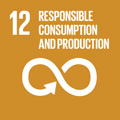- Docente: Alessandro Morri
- Credits: 6
- SSD: ING-IND/21
- Language: Italian
- Teaching Mode: In-person learning (entirely or partially)
- Campus: Bologna
- Corso: First cycle degree programme (L) in Industrial Chemistry (cod. 8513)
Learning outcomes
At the end of the course, the student has knowledge about:
- physical, chemical and mechanical properties of metals and alloys
- the basic characterization techniques for metallic materials
- materials selection criteria based on design requirements.
Course contents
Prerequisites
- Basic mathematics skills (differential equation, integral calculus)
- Basic concepts of physics (forces, thermodynamic etc.)
- Basic chemistry principles
- Phase diagrams
Mechanical testing and properties: tensile, hardness, fatigue, impact, creep, friction and wear
Solidification microstructures and defects: nucleation and growth of pure metals and alloys. Influence of solidification microstructure and defects on mechanical properties
Crystal structure and imperfections in the atomic arrangement: main crystal structures of metals and their effect on mechanical properties. Point defects and atom movements in materials (diffusion).
Dislocations and theory of plastic deformation
Strengthening mechanisms of metals: solid solution, strain hardening, grain refinement, precipitation and dispersion.
Alloys and binary phase diagrams. The Fe-C phase diagram: Equilibrium microstructures of steels.
Designation and classification of steels
Phase transformation in steels: TTT and CCT curves.
Heat treatments of steels: annealing, normalizing, quenching, tempering.
Thermochemical diffusion treatments (carburizing, nitriding) for the enhancement of friction/wear and fatigue properties.
Cast Irons: (white, grey and ductile). Designations, macro and microstructures, properties and applications.
Aluminum alloys: main alloying elements, designation, microstructures, thermal treatments and mechanical properties.
Microstructural and fractographic analyses of metals
Selection criteria of metals as a function of the service conditions.
Readings/Bibliography
Course material (slides and notes in Italian).
S.Barella, A. Gruttadauria, “Metallurgia e Materiali non metallici”, Eusculapio
A. Cigada, T. Pastore "Struttura e proprietà dei materiali metallici", Mc-Graw Hill
W. Nicodemi “Metallurgia - Principi generali”, Zanichelli
G.M. Paolucci, “Appunti dalle lezioni di Metallurgia per la laurea in Ingegneria Meccanica” Vol.1-2, Edizioni Libreria Progetto, Padova
Donald R. Askeland, P Webster "The science and engineering of materials", Chapman & Hall
W.D. Callister, “Scienza e ingegneria dei materiali. Una introduzione”, Edises (2007).
W.F.Smith, J.Hashemi, “Scienza e Tecnologia dei Materiali” McGrawHill
Teaching methods
Class or on-line lectures according to the timetable.
Assessment methods
The final examination consists of a written test (45 minutes on the EOL website) and a oral examination, aiming at assessing if the student learned how (i) to select metallic materials and treatments for producing mechanical components that work in a given service condition and how (ii) to identify the reasons for malfunctioning related to material features.
The exam could be partially modified if the COVID-19 pandemic made it necessary.
Teaching tools
PC and projector, blackboard.
The teaching material will be available on the website VIRTUALE.
Office hours
See the website of Alessandro Morri
SDGs




This teaching activity contributes to the achievement of the Sustainable Development Goals of the UN 2030 Agenda.
